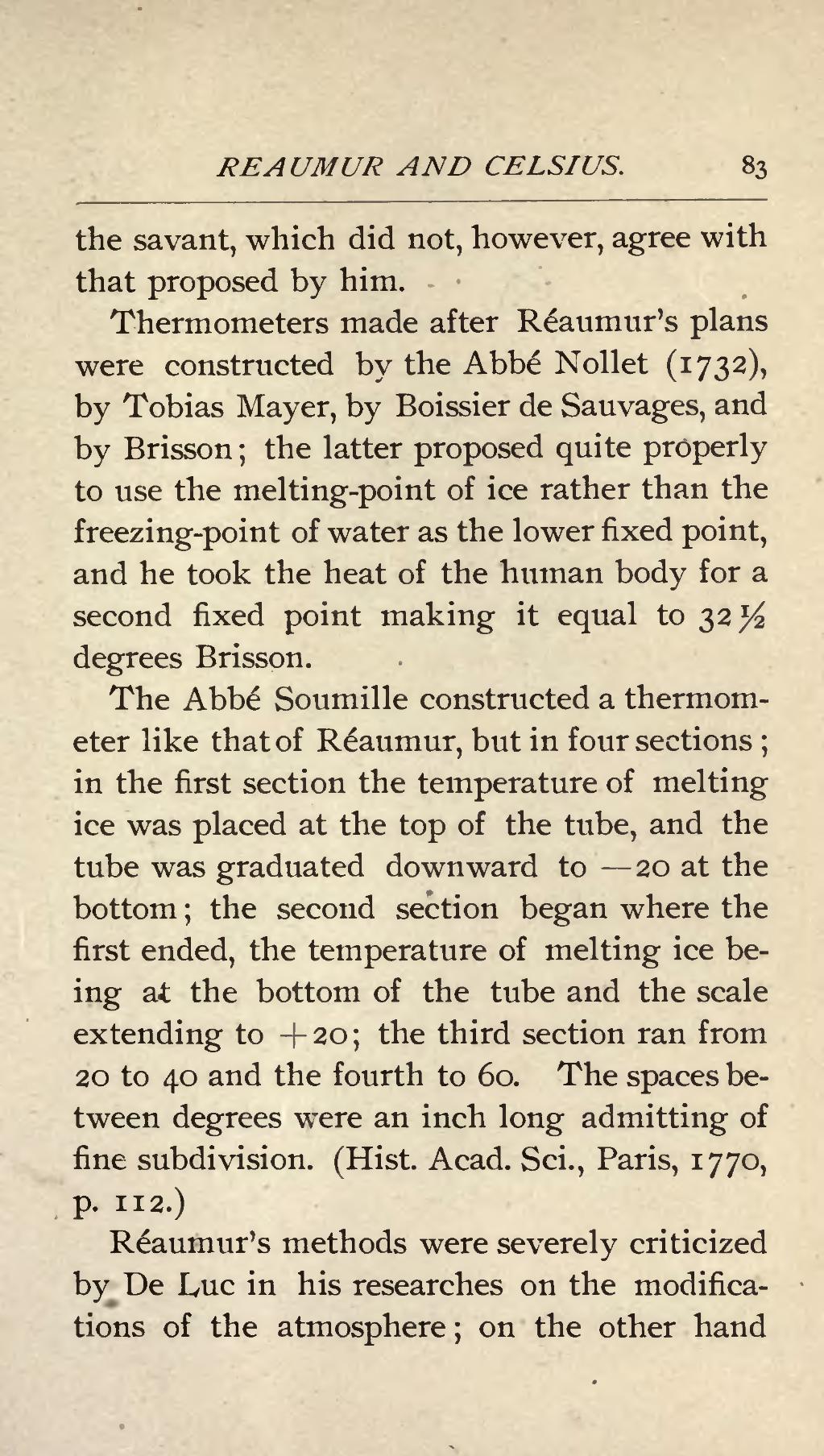the savant, which did not, however, agree with that proposed by him.
Thermometers made after Réaumur's plans were constructed by the Abbé Nollet (1732), by Tobias Mayer, by Boissier de Sauvages, and by Brisson; the latter proposed quite properly to use the melting-point of ice rather than the freezing-point of water as the lower fixed point, and he took the heat of the human body for a second fixed point making it equal to 32½ degrees Brisson.
The Abbé Soumille constructed a thermometer like that of Réaumur, but in four sections; in the first section the temperature of melting ice was placed at the top of the tube, and the tube was graduated downward to−20 at the bottom; the second section began where the first ended, the temperature of melting ice being at the bottom of the tube and the scale extending to +20; the third section ran from 20 to 40 and the fourth to 60. The spaces between degrees were an inch long admitting of fine subdivision. (Hist. Acad. Sci., Paris, 1770, p. 112.)
Réaumur's methods were severely criticized by De Luc in his researches on the modifications of the atmosphere; on the other hand
